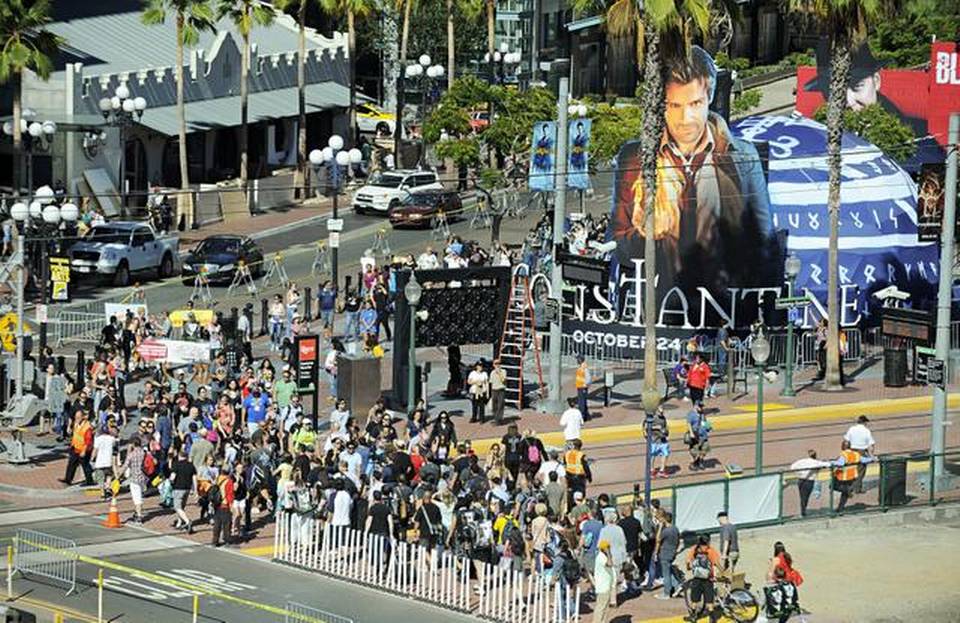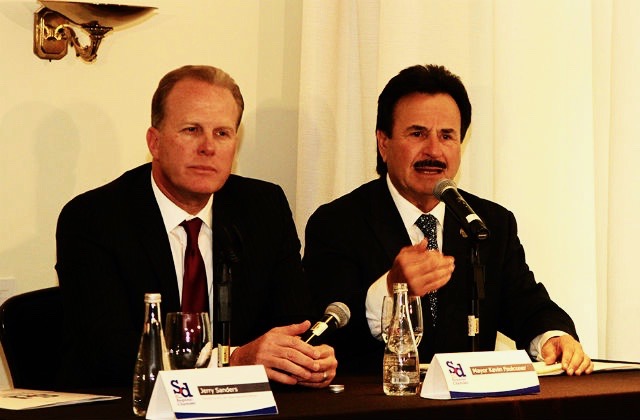Daily Business Report-March 20, 2015
San Diego County Jobless Rate Dips to 5.3 Percent
Nonfarm employment up by 6,200 jobs over the month; up by 39,700 over the year
The unemployment rate in the San Diego County was 5.3 percent in February, down from a revised 5.8 percent in January 2015, and below the year-ago estimate of 7.1 percent, the state Employment Department reported today.
California’s unemployment rate for February was 6.8 percent. The nation’s jobless rate was 5.8 percent.
Between January and February:
Total nonfarm employment increased from 1,360,600 to 1,366,800, a gain of 6,200 jobs. Agricultural employment added 500 jobs, or 5.2 percent.
• Government reported the greatest month-over gain, adding 2,600 jobs. Local government (up 1,600) accounted for more than 60 percent of the job growth in this sector, primarily from seasonal advances in local government education (up 1,700). State government added 1,000 jobs, all from seasonal expansion in state government education (up 1,000). Federal government recorded no change in employment levels over the month.
• Six other nonfarm sectors also posted month-over job gains: leisure and hospitality (up 1,400); educational and health services (up 1,200); financial activities (up 900); professional and business services (up 400); information (up 100); and manufacturing (up 100).
• Two industries recorded job losses over the month: construction (down 400) and trade, transportation, and utilities (down 100).
Between February 2014 and February 2015:
Total nonfarm employment increased by 39,700 jobs, or 3.0 percent. Agricultural employment added 1,000 jobs, or 10.9 percent.
• Professional and business services reported the greatest year-over gain, adding 8,800 jobs. Professional, scientific, and technical services (up 8,100) contributed to more than 90 percent of the job growth in this sector. Administrative and support and waste services gained 1,500 jobs, followed by a decline of 800 jobs in management of companies and enterprises.
• Nine other nonfarm sectors also added jobs over the year. The most notable employment gains came from leisure and hospitality (up 8,200); educational and health services (up 6,900); and government (up 4,000).
• All major sectors recorded year-over employment expansion except mining and logging, which reported no change in employment levels over the year.
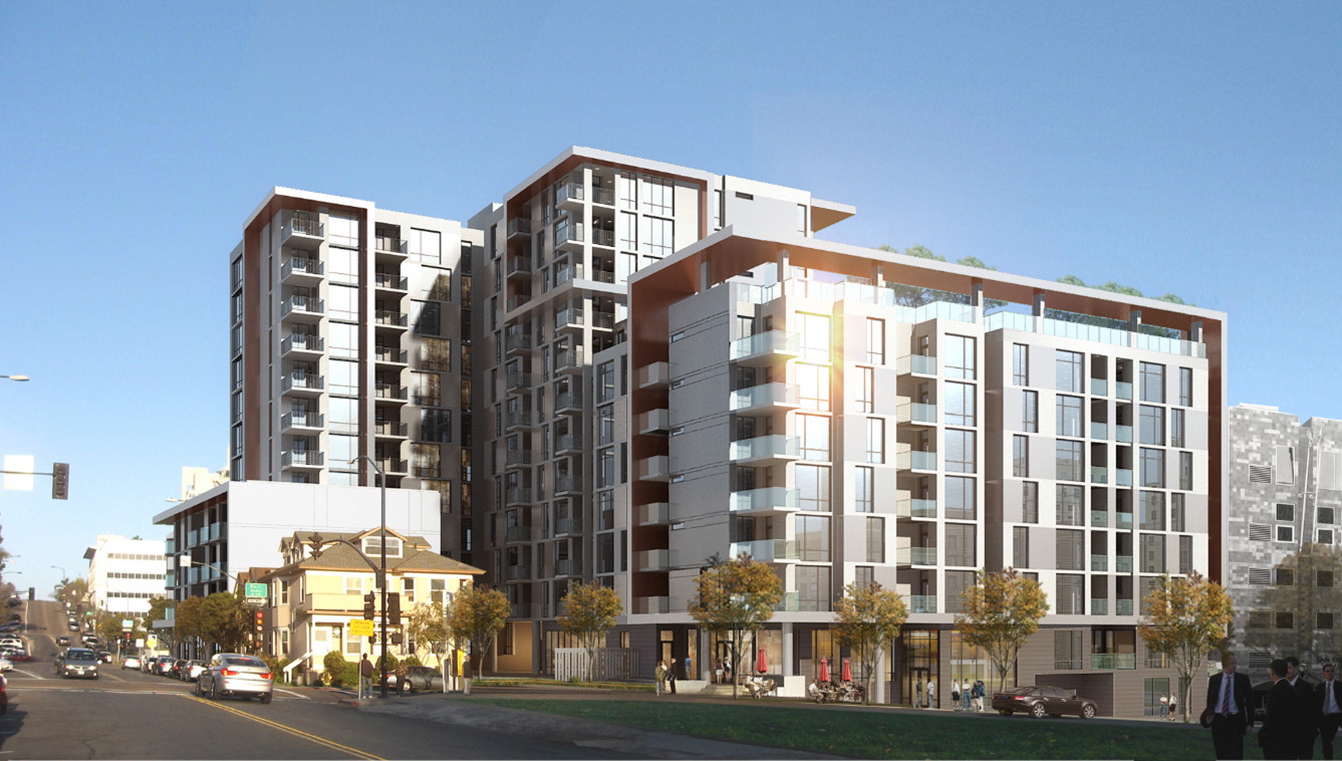
New Affordable Home Project
Planned for Downtown San Diego
Wakeland Housing and Development Corp. on March 24 will break ground on Atmosphere, a community of more than 200 affordable homes in the heart of Downtown San Diego. Located on Fourth Avenue at Beech Street, Atmosphere was the first development approved from the city’s Affordable Housing Master Plan, and the start of construction marks the revival of affordable housing in this neighborhood.
Besides providing new, more affordable homes for working families Downtown, Atmosphere will also help address the city’s growing need for permanent supportive housing by designating 51 homes for those with special needs, according to Wakeland.
“Atmosphere will be an important addition to the national Housing First model for addressing homelessness,” said San Diego Housing Commission President and CEO Richard C. Gentry. “Under Housing First-San Diego, we are committing up to 1,500 federal rental assistance vouchers to provide housing to homeless individuals and families. This includes 51 Project-Based Housing Vouchers for Atmosphere, with an estimated annual value of $504,288.”
Financing for Atmosphere draws on a mix of sources including state tax credits, infill funding, vouchers from SDHC and former redevelopment funds from Civic San Diego.
The groundbreaking ceremony will take place at noon March 24 at the Atmosphere site, 1453 Fourth Ave.
Construction on Atmosphere is expected to be completed in early 2017.
Governor and Legislators Mobilize Forces
To Help Communities Cope With Drought
Mobilizing state resources to face another year of extreme dry conditions, Gov. Jerry Brown on Thursday joined legislators to announce legislation to help local communities cope with the ongoing, devastating drought. The $1 billion package will expedite bond funding to make the state more resilient to the disastrous effects of climate change and help ensure that all Californians have access to local water supplies.
“This unprecedented drought continues with no signs yet of letting up,” said Brown. “The programs funded by the actions announced today will provide direct relief to workers and communities most impacted by these historic dry conditions.”
The legislation includes more than $1 billion for local drought relief and infrastructure projects to make the state’s water infrastructure more resilient to extreme weather events. The package accelerates $128 million in expenditures from the governor’s budget to provide direct assistance to workers and communities impacted by drought and to implement the Water Action Plan.It also includes $272 million in Proposition 1 Water Bond funding for safe drinking water and water recycling and accelerates $660 million from the Proposition 1e for flood protection in urban and rural areas.
Brown was joined by Senate President pro Tempore Kevin de León, Assembly Speaker Toni Atkins and Republican Leaders Senator Bob Huff and Assemblymember Kristin Olsen.
“The drought isn’t letting up, so we can’t let up either,” said Atkins. “This legislation will deliver relief to Californians harmed by the drought and help us manage the significant problems the drought continues to cause. Since our skies are still clear — our job is too. And making sure we meet emergency needs, prepare for short term problems, and advance longer-term projects are an important part of that effort.”
Port Seeks Comment on Parking
Meters at Downtown Waterfront
The Port of San Diego will host a public meeting on March 25 seeking comment on changes that have been made to parking meters along the Downtown waterfront. The meeting will be at 5:30 p.m. in the Training Room at the Port Administration Building, 3165 Pacific Highway.
The meeting is being held in advance of an April 14 Board of Port Commissioners meeting where commissioners will hear an update on the parking meter pilot program, establish rates for the parking meters and transfer of funds for purchase of smart meters and sensors.
Stadium Group Chairman: Financing
Plan to Include Mix of Revenue Streams
A financing plan to build a football stadium in San Diego that likely will cost about $1 billion will rely on a mix of revenue streams, the chairman of an advisory group tasked with implementing how to pay for the project said Thursday.
In a presentation to the City Council’s Economic Development Committee, Adam Day said the city of San Diego and Chargers would make investments, and income would be used from naming rights, personal seat licenses, parking and concessions. Revenue from a mixed-use development at the Mission Valley site adjacent to aging Qualcomm Stadium would also be included in a financing package, Day said.
He said everything will be on the table except for a tax increase that requires approval by a two-thirds majority in a public vote. That threshold has been widely viewed as unattainable.
“The Chargers plan in 2005 and 2006 relied entirely on maximizing development of the existing Qualcomm site to pay for a new stadium,” Day told the committee members. “Our plan will not do that.”
Day’s update came one week after his task force recommended Mission Valley over downtown as a location for a new stadium for San Diego’s National Football League franchise, which has been seeking a new playing facility for well over a decade.
He said the cost estimate of a stadium ranges between $700 million and $1.5 billion. “I think it’s safe to say it’s going to be somewhere in-between there,” Day said. “That doesn’t mean it will be a facility that will have all the bells and whistles because I don’t think that’s the San Diego style.”
He said the nine-member task force will hold further meetings with the Chargers and representatives of the NFL commissioner’s office, and provide a final report to Mayor Kevin Faulconer on or before May 20.
— City News Service
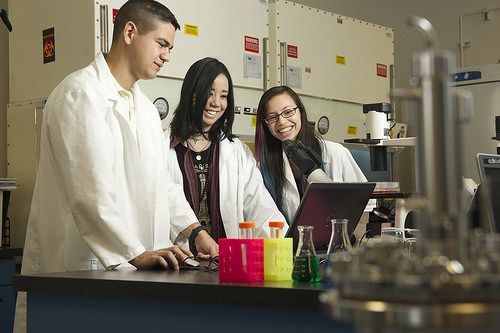
New Scholarship Fund to Assist Future
Baccalaureate Students at MiraCosta College
The MiraCosta College Foundation announced the establishment of a $75,000 endowed scholarship fund for students enrolled in the pilot bio-manufacturing baccalaureate program, which was approved by the California Community Colleges Board of Governors.
Stephen L’Heureux, a Carlsbad resident and member of the MiraCosta College Foundation Board, was inspired to establish the fund in honor of the new opportunities the program will afford students.
“This baccalaureate program will prepare students for local, well-paying jobs upon graduation,” said L’Heureux. “My intention with this gift is to assist students who need the financial help and to inspire others to support the development of this program.”
The approved bio-manufacturing baccalaureate program will prepare students for employment in the manufacturing sector of the biotechnology industry.
Under the law, the four-year degree program must be up and running by at least the 2017/18 academic year; however, districts may start their programs by the fall 2015 semester. Lower-division course work would cost $46 per unit and upper-division course work would cost $84 per unit under the new program, with an estimated total cost of about $10,000 to obtain a bachelor’s degree.
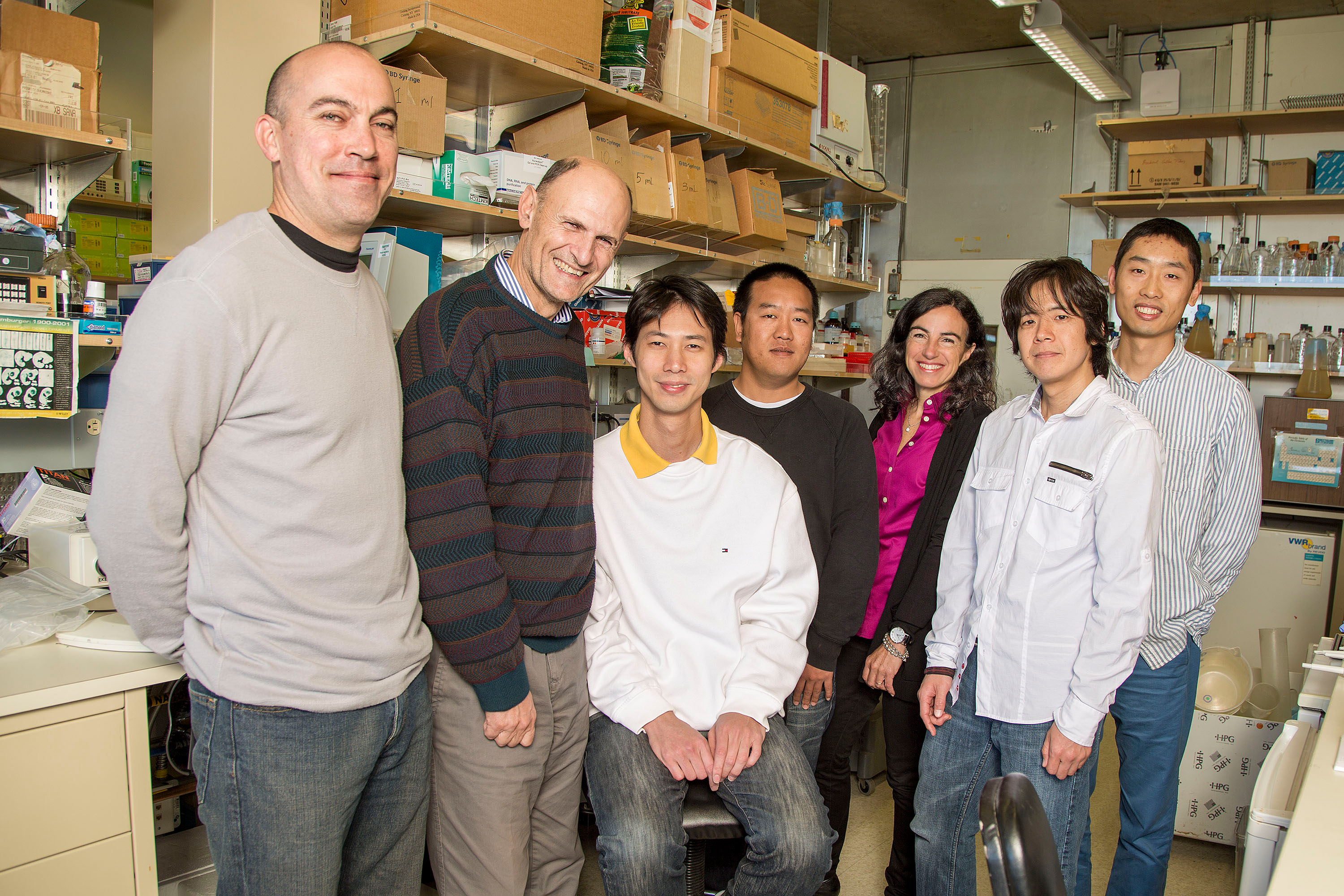
Cellular Scissors Chop Up HIV Virus
Imagine a single drug that could prevent human immunodeficiency virus (HIV) infection, treat patients who have already contracted HIV, and even remove all the dormant copies of the virus from those with the more advanced disease. It sounds like science fiction, but Salk scientists have gotten one step closer to creating such a drug by customizing a powerful defense system used by many bacteria and training this scissor-like machinery to recognize the HIV virus.
“Evolution has led to some of the most astonishing mechanisms for protecting organisms against their natural pathogens,” says Juan Carlos Izpisua Belmonte, a professor of Salk’s Gene Expression Laboratory and senior author of the new work, published March 10 in Nature Communications. “Understanding the immune responses by which bacteria protect themselves against viral infections has allowed us to engineer novel platforms for the targeting of devastating viruses, such as HIV, in human patients.”


